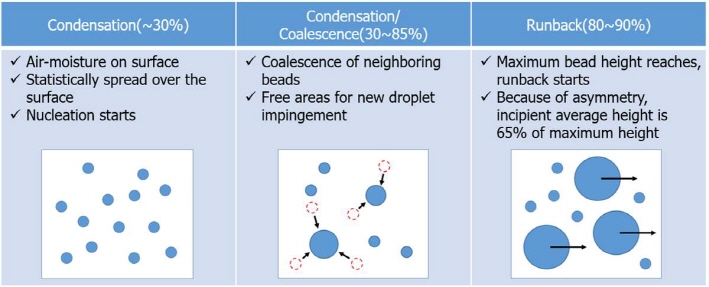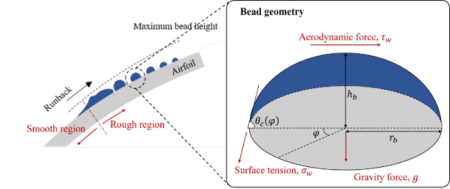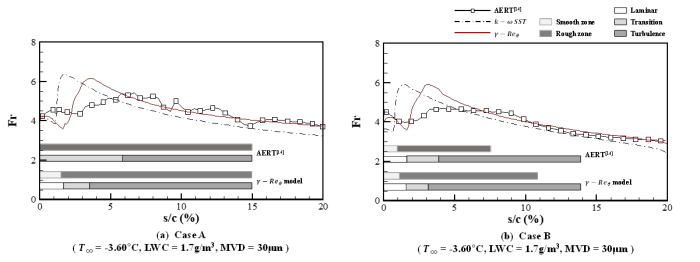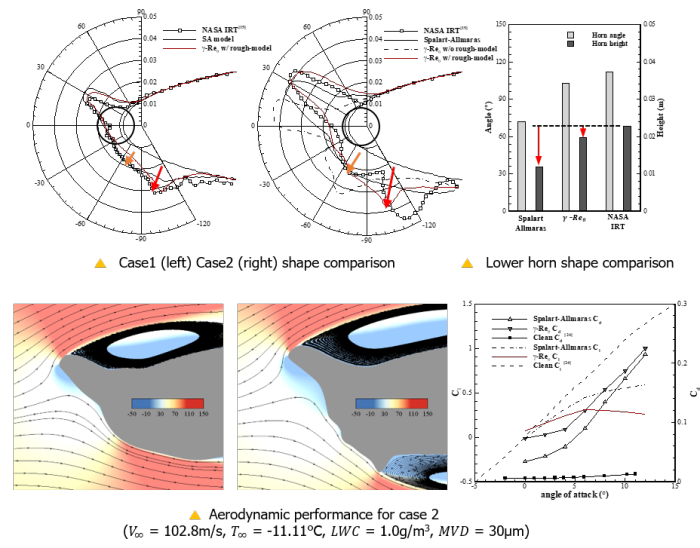Roughness induced Turbulence Model
Ice Surface Roughness Model
While aircraft icing is a severe risk to aviation safety, there are still limited models of predicting ice accretion shapes. Surface roughness is one of these limitations based on empirical sand grain roughness model from NASA. The surface roughness, not only related to the skin friction penalty, however, increased roughness could enhance the convective and evaporative heat fluxes and accelerate the freezing rate of run-back water affecting ice shape generation. Experimental evidence shows that water flow over the surface could form different types of surface, usually classified into beads, rivulets, and film, and create significant surface roughness. Thus, there are growing interests in numerical analysis of surface roughness distribution during the CFD-Icing simulation procedure.

Surface roughness distribution is computed by modeling the forces affecting on the incoming mass of water after droplet impingement. With analytical models, maximum bead heights are calculated as a reference value, and the water film height determines surface status compared to the value. The model could also directly simulate the behavior of roughness growing with respect to time and location after the droplet impingement. The AVDL is now implementing this roughness model on the ISEPAC code based on OpenFOAM® platform.

Roughness Turbulence Transition Model
Appropriately modeling surface roughness is crucial for predicting inflight icing due to its influence on convective heat transfer. Most prevalent numerical simulations to this end rely on empirical correlations, where surface roughness is assigned a constant value. This limits the accurate computation of turbulent transitions, leading to a discrepancy between the experimental and the simulated shapes of ice. To improve shape prediction, we proposed an approach to simulate the roughness distribution and its effect on the transition.


